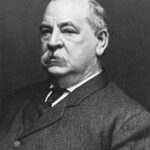The Cleveland Economic Panic Crisis
President Grover Cleveland faced America’s worst economic crisis in 1893. The Cleveland Economic Panic devastated the nation’s financial system. Stock prices collapsed by over 40% within months. Railroad companies declared bankruptcy at unprecedented rates. 📊 Unemployment skyrocketed to nearly 20% nationwide. Cleveland’s response reflected his strict constitutional interpretation. He believed federal government intervention violated core American principles.
Limited Federal Response Strategy
Cleveland rejected calls for massive federal relief programs. His administration focused solely on monetary policy solutions. The president repealed the Sherman Silver Purchase Act in November 1893. ⚠️ He refused to authorize direct aid to unemployed workers. Cleveland maintained that states and local communities should handle relief efforts. This approach aligned with traditional limited government philosophy.
Growing Public Opposition
Critics attacked Cleveland’s inaction as millions suffered. Labor leaders organized massive protests against administration policies. 💰 Business failures reached historic levels across major industries. The Cleveland Economic Panic response became a defining political issue. Democratic Party support eroded rapidly in affected regions.
Impact:
Immediate Economic Consequences
Cleveland’s limited response deepened the economic catastrophe significantly. 📉 Over 15,000 businesses failed during the depression’s peak years. Agricultural prices collapsed, devastating farming communities nationwide. Industrial production dropped by approximately 25% between 1893-1894. Unemployment remained above 15% for multiple consecutive years. The lack of federal intervention prolonged recovery efforts.
Social Unrest and Political Upheaval
Massive labor strikes erupted across the industrial heartland. 🔥 The Pullman Strike of 1894 brought transportation to a standstill. Cleveland’s military intervention against strikers sparked further controversy. His administration lost congressional control in the 1894 midterm elections. Democratic losses were among the largest in American political history. The party’s reputation suffered lasting damage in working-class communities.
Long-term Political Transformation
The Cleveland Economic Panic response reshaped American political discourse permanently. Progressive movements gained momentum from widespread suffering. 🌍 International observers questioned American economic stability and leadership. Future presidents adopted more interventionist approaches during economic crises. The crisis demonstrated limitations of strict laissez-faire governance. Cleveland’s policies contributed to the rise of populist political movements nationwide.
